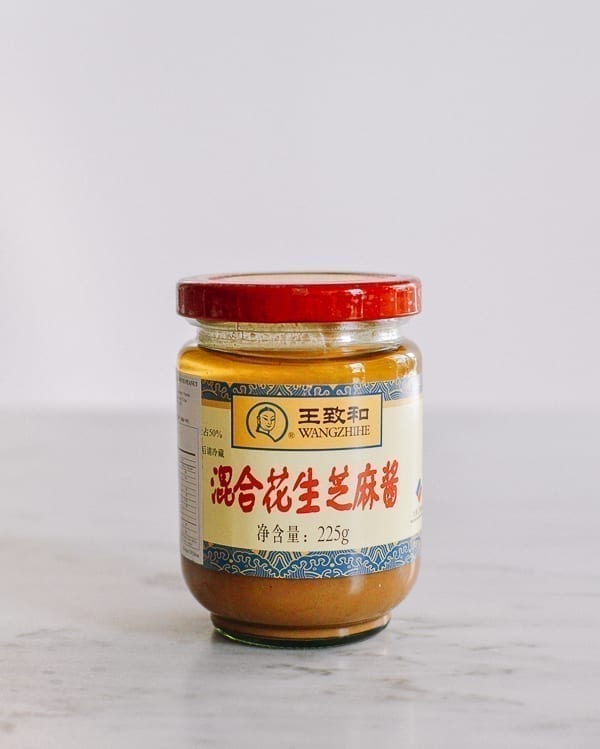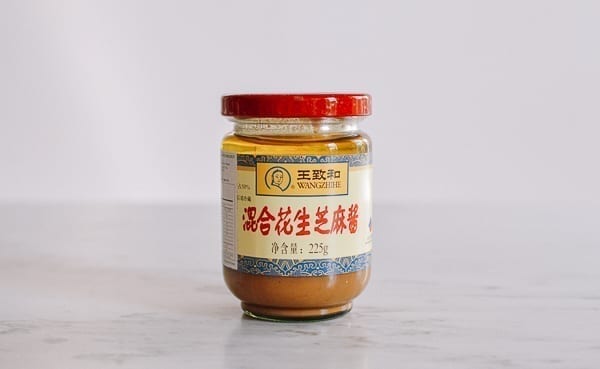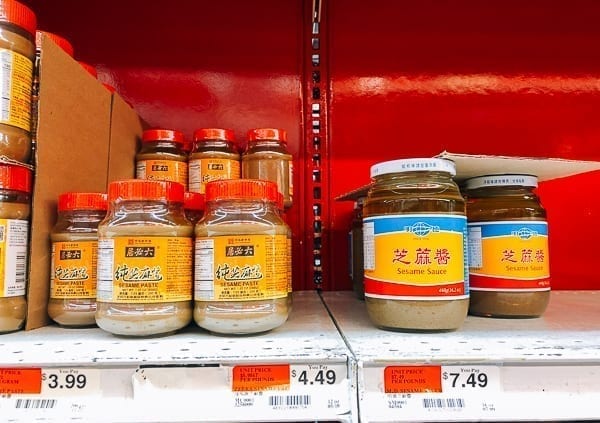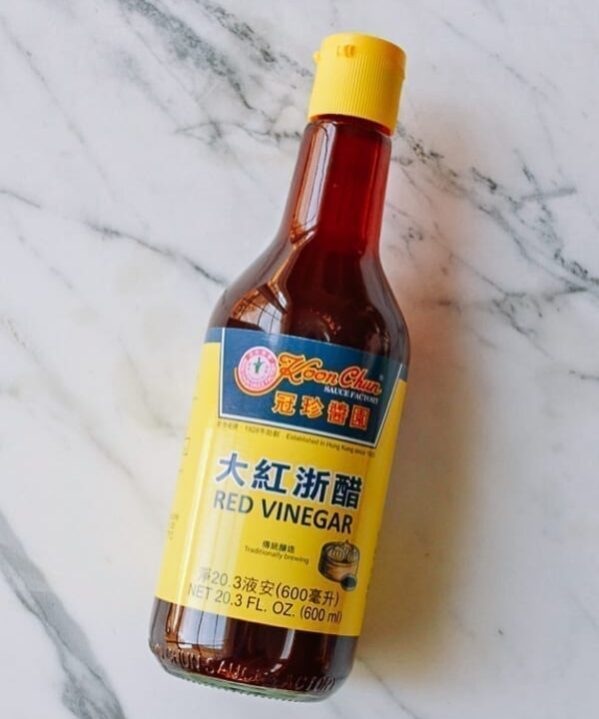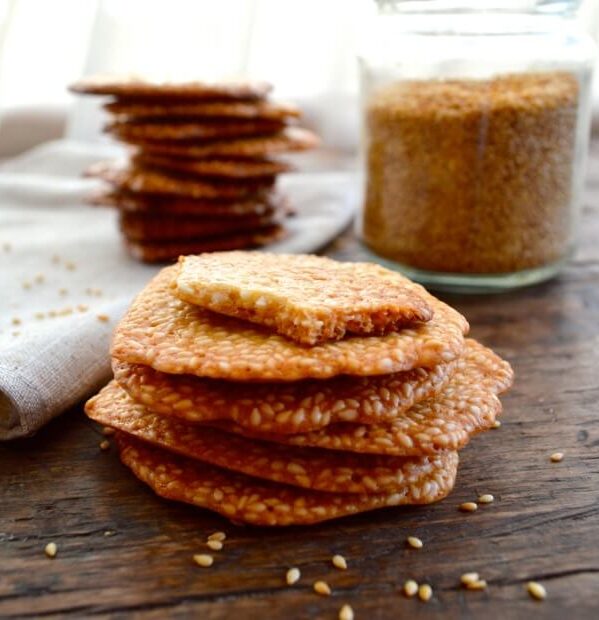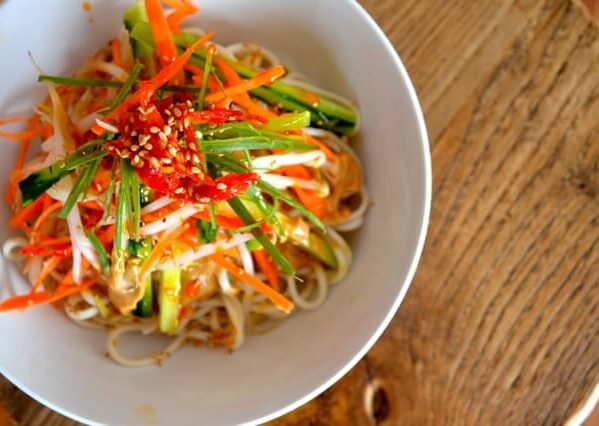The flavor of sesame is very important in Asian cooking, from using sesame oil in sauces, marinades, and stir-fries to using toasted sesame seeds to garnish hot dishes as well as desserts and baked goods. But what about Chinese sesame paste?
In this quick article, we’ll tell you everything you need to know about this ingredient. We’ll also go into how you can use it in Chinese cooking.
What Is Chinese Sesame Paste?
Chinese sesame paste (zhī ma jiàng, 芝麻酱) is a richly flavored, thick paste made from toasted white sesame seeds.
While you may have heard of tahini, which is a Middle Eastern/Mediterranean paste made from sesame seeds, it is different from Chinese sesame paste in that it contains hulled, raw sesame seeds.
Because the Chinese version is made from toasted sesame seeds, it is significantly darker, nuttier, and stronger in flavor. We also find that Chinese sesame paste is denser than your average tahini, though this varies from brand to brand.
How to Use It
In Chinese cooking, cooks use sesame paste in sauces for cold noodle dishes, dipping sauces for hot pot, and dressings for dishes like Suan Ni Bai Rou. You can also use it in a variety of baked goods, desserts, and candies.
Buying & Storing
You can purchase Chinese sesame paste on Amazon, though it is more expensive than purchasing it from your local Chinese grocery store.
It’s important to note that some varieties and brands have added peanuts. We generally recommend buying brands made from pure sesame. However, if you have a peanut allergy, it’s especially crucial to check the ingredients list on the label!
Refrigerate the paste after opening (it contains a lot of oil and can go rancid if left unrefrigerated). Just make sure to stir it before refrigerating so the oil doesn’t stay separated. It will harden significantly in the refrigerator and become difficult to stir. If you buy natural peanut butter, you’re probably already familiar with this phenomenon!
Substitutions for Sesame Paste
If you’re unable to find Chinese toasted sesame paste, you can use tahini as a substitute in a pinch, though the flavor will be much milder.
If you don’t have any issues with peanut allergies, peanut butter is also a decent substitute.
Alternatively, if you can buy sesame seeds and have a high-powered blender or food processor with the ability to grind spices, you can make your own (see below).
How to Make Sesame Paste
(Scroll down for printable recipe card.)
Simply take about 8 ounces (225g) of sesame seeds and toast them until golden and fragrant (careful not to burn them).
Allow the sesame seeds to cool, and place in a food processor or blender with a couple tablespoons of sesame oil.
Grind down to a paste, and continue streaming in sesame oil slowly until a smooth paste forms. You can also add salt to taste, if you like!
Our Favorite Recipes That Use This Ingredient
- 10-Minute Sesame Noodles
- Sichuan Chicken in Chili Oil Sauce
- Hunan-Style Steamed Eggplant
- Hot Dry Noodles (Re Gan Mian)
- Hot Pot Sauce Noodles
- Sichuan Spicy Wontons
If you have further questions about this ingredient, let us know in the comments––we try to answer every single one.
How to Make Sesame Paste
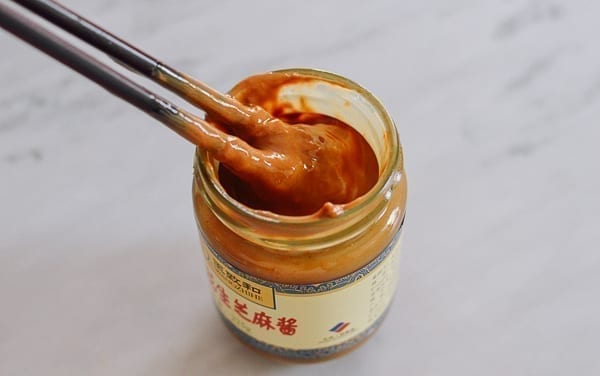
Instructions
- Toast sesame seeds in a dry pan over medium low heat until golden and fragrant (careful not to burn them).
- Allow the sesame seeds to cool, and place in a food processor or blender with sesame oil.
- Grind down to a paste, and continue streaming in sesame oil slowly until a smooth paste forms. You can also add salt to taste, if desired.
